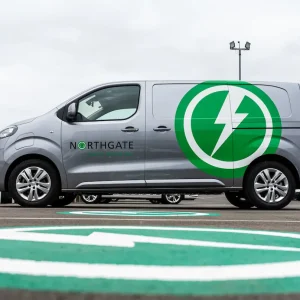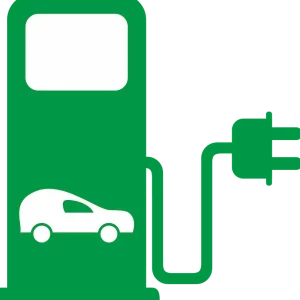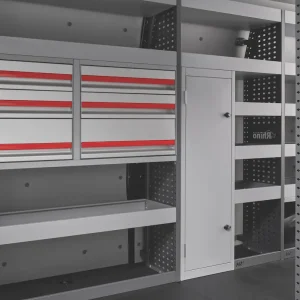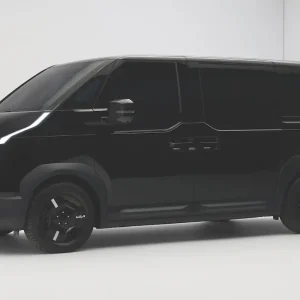It’s been seven years since What Van? began its annual analysis of manufacturer websites and the competition has narrowed between the top 10 online shop fronts.
A series of improvements has left a narrow gap of 7% between first and second places and, while there is undoubtedly room for improvement elsewhere, there was a 10% rise in last year’s lowest-ranked brand, which proves the best-known names have upped their game.
Some of the same old trends remain, though.
Manufacturers with dedicated van brands generally do websites better than those where they’re lumped in with passenger cars, and few do LCV social media well. Our probe into customer services shows that email and phone responses remain hit and miss but, surprisingly, online live chat systems have dramatically improved.
Some firms have poured serious effort into their digital presence, namely Fiat, which has launched a completely new site.
Peugeot has introduced all-new business pages, encompassing vans, while VW has made a series of minor enhancements to keep its already excellent site at the top.
The one to watch, though, is Merc. Along with recent initiatives such as online sales for the X-Class pick-up, it will launch a new site this year that, crucially, will have a vehicle configurator – the one function it lacks. That might be enough to change the order at the top in 2019.
What we assessed
Conducted in mid-September, our analysis covers 10 key areas of each manufacturer’s website and ranks them from one (lowest) to 10 (highest), and the scores are added to generate a precise percentage.
We have rewarded companies that have shown initiative and made improvements since our 2017 assessment and deducted points for stagnation or websites that make critical information difficult to find. Our highest priorities are van-specific content and ease of navigation; in the case of the latter, we have used prices as a barometer – i.e. it should be easy to find out how much a new van costs. Phone and email responses were judged on speed and accuracy.
- Ease of use: The most important thing for any website. Fundamentally, it should provide information about the products in a simple and digestible format; you shouldn’t have to dig around for key facts and figures.
- Design: It’s subjective, but the cosmetics of a web page count for a lot. If it’s dull, you’ll click away sooner rather than later.
- Van configuration tool: They’re common on passenger car websites but configurators are still missing from a lot of van pages. The best ones are slick, with good access to information.
- Brochure download: Why have a brochure in the digital age? Because they’ve often got heaps of useful information in one place. We’ve commended those that are easy to find, download and contain plenty of facts and figures; manufacturers that keep them under lock and key unless you relinquish your personal details, we’ve penalised.
- Email response: Posing as a potential customer, we sent an email to the general enquiries address on each manufacturer’s website, asking if a popular model has air-conditioning as standard and, if not, how much it costs. Speed and accuracy of response were paramount.
- Telephone enquiry: We called the generic contact number on each website and asked whether or not the new van range complies with Euro6 emission regulations (it should). Again, speed and accuracy were critical.
- Dealer locator: The website is the obvious place to find your nearest dealer, so the location tool should be easy to find and use. Those with van-relevant filters score higher.
- Social media presence: Manufacturers are usually hot on car-themed, promotional social media content, but we’ve commended those that offer interesting or useful LCV feeds.
- Mobile site: A slick and functional conversion to mobile format is more important than ever. Evidence of adaption goes down well with us; less so those that just replicate the desktop format.
- Extras: Manufacturers that go the extra mile with interesting, relevant or fun van-themed features, tools or content get our vote.
Right here, right now: brands improve live chat services
Six of the UK’s top 10 LCV manufacturers currently offer a live chat service to field customer enquiries, and What Van? is pleased to report that the facilities are better than at any point during the past five years’ assessments.
Fiat was a new addition this year, while Nissan and Peugeot remain absent, having previously offered live chat (albeit poor) in the past. Of the manufacturers that offer the service, we asked each one whether or not a key model is fitted with a USB socket as standard. Here’s how it played out:
- VW CVs launched live chat in June 2017 and got off to a good start in last year’s inaugural assessment, but 2018 was even better. We had a near-instant response and the operator answered our question to the affirmative in four minutes – less than half the time it took a year ago – and offered to put us in touch with a van centre.
- New for 2018, Fiat’s live chat service was equally impressive. The agent gave us a very specific answer, detailing various different trim levels of the Fullback in five minutes. The snag is that the service is housed on the car website, not the Fiat Professional one.
- The biggest live chat improvement of 2018 is Mercedes, which more or less ignored us last year. The operator got back to us in five minutes with a straightforward and definitive answer. As with Fiat, you have to go looking for live chat on the car site, though.
- Renault’s live chat service has been one of the better ones for some time, although it needs to be, as the firm doesn’t offer email correspondence. The page loaded faster this year and the agent supplied us with a meticulous answer in five minutes.
- Vauxhall was previously the best in class for live chat with the quickest and most accurate responses. The service is still top-notch, but other manufacturers have caught up. We had our answer within six minutes.
- At eight minutes, Ford’s time to answer was the longest, but that’s hardly terrible and vastly superior to every other form of communication the manufacturer offers. The agent was very specific and also provided a link to a brochure, which is a monumental improvement on last year’s shoddy service.
All six manufacturers answered our question, which doubles the amount of successful responses we have received to 12 in a total of five years of live chat assessments and 24 individual attempts. We have frequently been disillusioned with the services in the past, but this year was the best by far; it proves that original equipment manufacturers are really getting behind instant digital interactions with van customers – so much so that it’s now a superior form of communication to phone calls and email enquiries.
To read What’s Van?‘s detailed breakdown of how the brands got their scores, and the final league table, click the ‘Website Review – Results’ file in the ‘Related Files’ section at the top.





